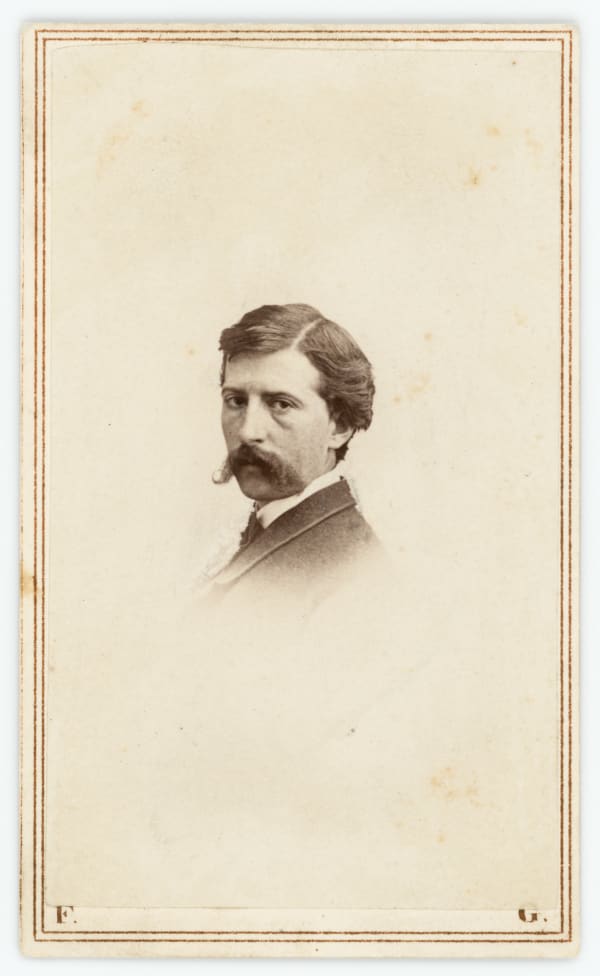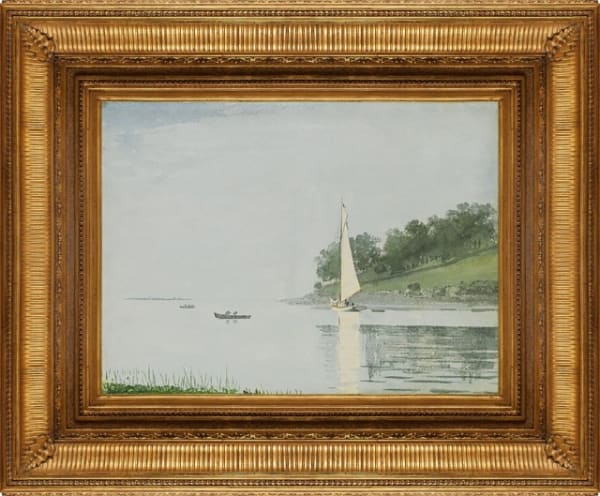The continued interest in Winslow Homer’s art and character, more than a century after his death, is a tribute to both his work and the man himself. Ahead of his time, the first paintings of the sea that Homer exhibited in New York were panned by the critics. Writer and critic Henry James wrote that Homer’s paintings were, “almost barbarously simple” with “no imagination.” Although James did add that “there is something one likes about him.”
Homer’s use of diffuse light and stark narrative was a sharp contrast to the emotional, bucolic work that was popular in the 1870s.
Winslow Homer: Eyewitness
Winslow Homer began his career as an illustrator. For nearly twenty years he free-lanced for popular magazines. Harper’s Weekly sent him to cover the Civil War in 1861, when he sketched and painted some of his most compelling works. He captured, not only the devastation and hardships of the soldiers at war, but also the anguish of those left behind.
Although Homer’s mother was a talented watercolor painter, and his first teacher, whose work was exhibited in New York before her son’s, his father was less supportive. Charles Homer was a temperamental man, who often left his family in pursuit of get-rich-quick schemes that never panned out.
It may have been his absent father that led Homer to paint some of his most poignant works, like Brush Harrow, where two young boys are doing the farm work that would ordinarily be done by adults (who had gone to fight in the war) and Tree Across the Trail, available at Surovek Gallery, that depicts a young boy isolated from the adults on the river by a fallen tree.
Winslow Homer: Eyewitness is an exhibit of Homer’s paintings at the Harvard Art Museums University Research Gallery. The exhibit examines the way that his early illustrations for Harper’s Weekly shaped his later career as a watercolorist and oil painter. The exhibit will run through January 5, 2020.
Homer at the Beach
Homer at the Beach: A Marine Painter’s Journey is a related exhibit at the Cape Ann Museum in Gloucester, Massachusetts that looks at the way his early paintings of the sea shaped his career.
Homer’s trips to Gloucester inspired his marine paintings and he returned to Cape Ann often. As a successful painter in his later years, Homer lived and worked in his studio in Prouts Neck, Maine, where he built an open-ended shack so that he could observe the sea in rough weather.
He was also able to travel in later years, and visited Key West often. Homer enjoyed his seclusive life and joked that he,“retired from the world to avoid jury duty.” He also enjoyed his life as a painter of the sea and the sky. “The Sun will not rise or set without my notice, and thanks.” he wrote.
The Works of Winslow Homer at the Surovek Gallery
Please contact us if you would like more information about Tree Across the Trail, Yacht in a Cove or any of the other fine works available at the Surovek Gallery.
References:
Alexander Eliot.Three Hundred Years of American Painting. Time Incorporated. New York. 1957.
www.harvardartmuseums.org
www.capeannmuseum.org




